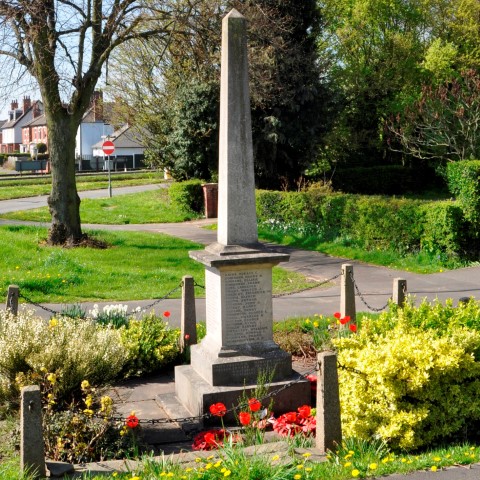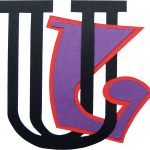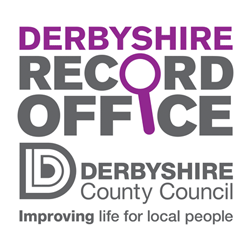Borrowash House: The Life of a House
On 5th July 2012, at Derby’s Pride Park football ground; an interesting residence was auctioned by Penney’s at a guide price of £150,000.
The building, familiarly known as Borrowash House is currently owned by Derbyshire County Council and before that, the Catholic Church. It has featured in the property pages of The Derby Telegraph (below as written) and offers a challenging prospect for would-be buyers:
On Instructions of Derbyshire County Council
Borrowash House is situated between Spondon and Borrowash, with the principal elevation facing away from the road and overlooking a belt of woodland within grounds of the property.
Vehicular access can be gained to the right hand side, where there is an adjoining car park area, but with gates leading into a courtyard.
The accommodation is arranged on two floors, save for two rooms at second floor level within the roof space, and a basement room. Other rooms are as follows:
Imposing Entrance Hall
With wide staircase off in two flights to first floor
Four Principal Rooms
To south elevation, one with some ancillary accommodation off a corridor.
Two Rooms
To the east elevation with back staircase between them.
Kitchen and Two Further Rooms
At a slightly lower level there is an Annexe containing Five Rooms.
At First Floor Level (which is split level), there are Ten Rooms, some with internal partitions (two accessed from the back stairs), whilst there are a further Four Roomsover the annexe wing.
Layout plans are available on request.
The grounds are a particular feature of the property having a belt of woodland containing some fine mature trees, as well as some open grassed areas. The whole site extends to about 2.5 acres.
No applications have been made to local planning authorities for alternative use consent and interested parties should make their own enquiries. There is however, considerable potential for a variety of different residential and/or commercial uses.
This information slipped the notice of the Unexamined Lives team – until we were contacted via our website unexaminedlives.com by somebody seeking information about its history with a view to purchase.
We know nothing about the circumstances of the possible buyer, except that her aim is to restore the property to its former glory.
Meanwhile, the request and enquiry excited the interest of project treasurer, Peter Ball who has researched and written the attached Unexamined Life of Borrowash House.
It has enjoyed an eventful and dramatic life so far and we wish it many more adventures in the 21st century!
Meanwhile, if anybody can tell us what happened to the house after Peter’s account ends, please contact helenrclark@ntlworld.com and I will finish the story!
Helen Clark: Unexamined Lives.
Borrowash House – An Unexamined Life
In 1872, the Towle family lived at Borrowash Mills and ran a significant industrial enterprise by the river where there were water-powered mills as well as a gas works. The site had access to the Midland Railway bringing in coal that could also be brought in by the adjacent canal. The mills and associated works were the largest employer in the village, providing work for both men and women.
The site was leased from the Earl of Harrington, the right honourable Charles Wyndham and a new lease was negotiated in June of 1872. At around the same time, Henry Neville Towle obtained a piece of land from the Harrington Estate upon which to build a substantial “gentleman’s” house on the south side of the old turnpike road then known as Nottingham Road Spondon. The land was next to a farm later run by Mr Meynell and often referred to in Borrowash as Meynell’s farm. This would have been a very peaceful location in those days long before the development of the Celanese site and the building of the large estates on the south side of Spondon.
By the time of the 1881 census, Henry Neville Towle, Solicitor was living on Nottingham Road in what is now known as Borrowash House, with his wife Harriet A Towle, son Robert, a visitor and 3 live in servants a cook and 2 housemaids. There were some happy times with Robert marrying Margaret Terry from Dudley. The young couple had a daughter Harriette Evelyn Neville Towle born in Borrowash. Subsequently all the children of this marriage used the name Neville before the family name. Unfortunately for the family Henry’s wife Harriet died in 1888 and then before the next census in 1891, Henry moved down to Hampstead in London to live with his sister Adeline Alsop. Henry died in Dulwich in 1901 leaving the modest sum of £85. By 1889, Robert and his family had moved to Knutsford, and he subsequently pursued his career as a solicitor in Bedford. Robert’s professional life was successful and in 1927 he left £2066 4s to his wife.
The occupation of the house then transferred to Frank Clarke, a maltster who in 1881 lived on Friargate. In the 1891 census, Frank aged 35 (born in Derby) with his wife Jemima (30) and his niece and nephew, Mabel and Harold Wren lived at The Hollies. His wife was born in Newport Monmouthshire. At the time a good friend of Frank’s was living just up the road at, another large Victorian house, the Manor House in Borrowash. This was Hepworth Tropolet Alton, the Derby Brewer and a great benefactor of the village of Borrowash. Frank’s residence in Borrowash was short and he died in December of 1900.
Frank Clarke was only 45 years when he died and a notice in the London Gazette in 1901 says that he was associated with the Derby firm of Thomas Clark and sons and that the executors of Frank’s will were Hepworth Alton and Mary Jane Clarke (widow). The estate was worth £9755 10s 4d; a very substantial sum for the time. It is in this will and the London Gazette notice that we first see the House called the Hollies. This is an important piece of evidence tying Clarke and Towle to this house.
The Hollies was then empty in the 1901 census. It was subsequently sold in 1905 to Samuel Theodore Bunning (known as Theodore). The price of the house was £2600 and the description was “13 reception rooms and offices, kitchen, scullery, laundry, WC on the ground floor and 10 bedrooms, bathroom and WC on the first and second floors. An old house in excellent repair with new wing built about 1900” (source Marion Johnson).
The brewing connection continued and the new owner Theodore Bunning was Director of the Beeston Brewing Company. Bunning had started out working as a railway porter moving to be the station master at Beeston Station. He then got a job managing the Beeston Brewery at that time a very small brewery company. By aggressive expansion, Bunning added many public houses to the business and grew the business substantially. More about his business life can be seen on the website by David Hallam, Exploring Beeston’s History.
No doubt the ability to catch the train to Beeston from Borrowash would have been an attraction of the Hollies and its location on the Turnpike Road. The 1911 census shows Theodore and Sarah Bunning and 2 live in servants, a cook and a housemaid. The census sheet shows that there are 18 rooms in the house, slightly less than the number shown in the earlier sales catalogue.
Theodore’s beloved wife Sarah died in the first quarter of 1918. During this period there was the first outbreak of the “Spanish Flu”, with the later more serious outbreak in the autumn of 1918. Samuel arranged for his wife to be buried in the garden of the house. The Bunnings did not have children and Theodore did not have the comfort of children to help him through this difficult period.Theodore’s beloved wife Sarah died in the first quarter of 1918. During this period there was the first outbreak of the “Spanish Flu”, with the later more serious outbreak in the autumn of 1918. Samuel arranged for his wife to be buried in the garden of the house. The Bunnings did not have children and Theodore did not have the comfort of children to help him through this difficult period.
Theodore lived for a further 10 years at the Hollies. His death came on Easter Sunday 1928, at the age of 81. The funeral service was held in the billiard room at the Hollies, conducted by the vicar of Ockbrook. Theodore was laid to rest beside Sarah in the grounds of his home, according to his wishes. The family mourners were nephews and nieces – children of his own brothers and sisters – but also included his surviving sister, Emma Bunning;
Theodore was a very rich man and left £179,034 17s 1d in his estate, with a substantial part including the house going to his nephew, George Harold Stuart-Bunning (known as Harold).
The break from the brewery owners was sharp. The new owner was a former civil servant with a radical background. Harold’s father Edward Bunning was Theodore’s older brother but he fell out with his family over his first marriage. Edward changed his surname to Stuart resulting in problems for his son, who later changed his name to Stuart-Bunning at the request of his uncle. His father’s wayward life meant that Harold was brought up partly by his aunts.
In 1891 aged 20, he is in the census in Fulham, working as a postman. He married a girl from Canada in 1892 and they had 2 children while living in London. By 1901 the family had moved to Bristol and his occupation is again town postman. Harold was active in the Postmen’s Federation – becoming, variously, its Parliamentary Secretary, Secretary and General Secretary. Harold stood several times for Parliament as a Labour candidate. In 1908, he fought the Dundee by-election which was notable for the return of Winston Churchill to Parliament.
In 1914 he stood for the Labour Party in a by-election in Durham West, then in 1918 at the General Election he stood for Labour in Consett coming third in each contest.
In 1919 he was President of the Trades Union Conference and was succeeded by Jimmy Thomas, the MP for Derby. and he, and therefore his name, had begun to be prominent in the Trades Union movement nationally – such that he felt unable to simply change his name from Stuart to Bunning when Theodore suggested it but compromised on “Stuart-Bunning”.
In October 1919 he attended the inaugural International Labour Conference held in Washington, DC. Founded as part of the negotiations of the Treaty of Versailles after World War 1, this organisation was first an agency of the League of Nations and concerned itself with improving labour conditions and living standards throughout the world. It became an affiliated agency of the United Nations at its founding in 1946. He also played a key role in, and wrote the final report of, the Whitley Committee which established The Civil Service National Whitley Council which continues to this day to provide the framework for pay and conditions within the Civil Service. All this amounted to mould-breaking reform for which he received the Order of the British Empire.
In 1908, Harold married his second wife, Emily Agnes Lucas and together they had three daughters, Joan, Margaret and Cicely in the years up to 1918. His son Edward Harold, unmarried, was killed during World War 1
The Stuart-Bunning family were London based and a country property at Borrowash was not their choice. Having received Borrowash house as a legacy in 1928, by 1932, Stuart Bunning was registered on a voting register in London. One source says that he had sold the Hollies to Albert Ball in 1932 and that it again changed hands in 1935, when its name was changed to Borrowash House.
The boundary between Spondon and Ockbrook parishes was changed in 1954, with about 90 acres being transferred from Spondon to Ockbrook Parish. The area transferred had always been described as Borrowash and at the time both parishes were in the Shardlow Rural District, so little change would have been seen by the residents.
Borrowash House history written by Peter Ball.
[google-map-v3 shortcodeid=”50cb6cd6e3″ width=”550″ height=”750″ zoom=”17″ maptype=”satellite” mapalign=”center” directionhint=”false” language=”default” poweredby=”false” maptypecontrol=”true” pancontrol=”true” zoomcontrol=”true” scalecontrol=”true” streetviewcontrol=”true” scrollwheelcontrol=”true” draggable=”true” tiltfourtyfive=”true” enablegeolocationmarker=”false” enablemarkerclustering=”false” addmarkermashup=”false” addmarkermashupbubble=”false” addmarkerlist=”52.909031, -1.390857{}1-default.png{}Borrowash House” bubbleautopan=”true” distanceunits=”miles” showbike=”false” showtraffic=”false” showpanoramio=”false”]






13 Responses to Borrowash House: The Life of a House